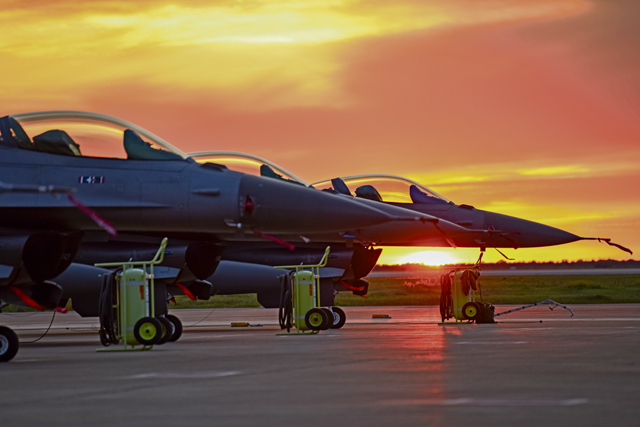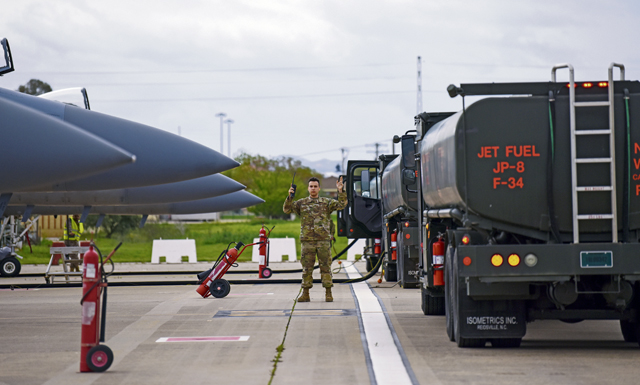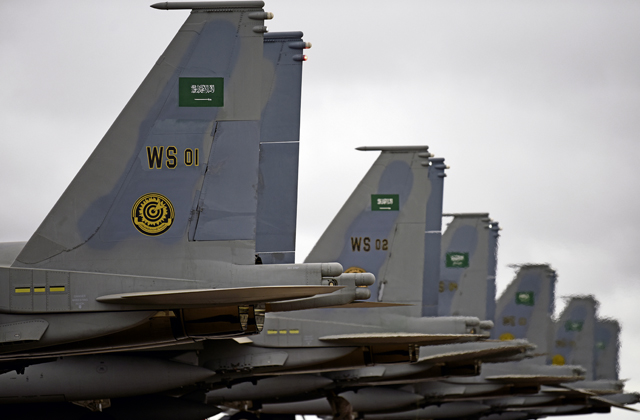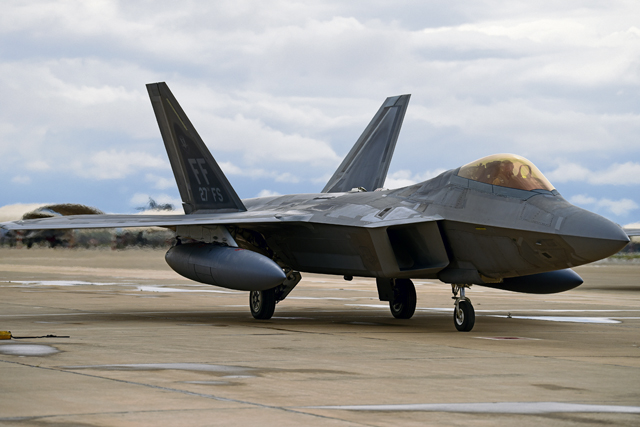MORÓN AIR BASE, Spain — During World War II, aircraft were ferried by boat across the Atlantic Ocean while making multiple stops along the way, sometimes having to be partially disassembled due to distance and fuel constraints.

Today, the process of moving fighter aircraft to and from overseas locations has been simplified. It is called a coronet.
“Aircraft move for a variety of reasons,” said Col. William M. Wallis, 65th Air Base Group commander, Lajes Field, Portugal. “Aircraft rotate in and out of theater to avoid overuse, meet maintenance requirements and, in some cases, stay with the units to which they are assigned. If the aircraft can’t make it to a required location on its internal fuel load, tankers fly along with them and provide fuel.”
Coronets typically consist of fighter or bomber aircraft that do not have the fuel capacity to fly the distance required, several air refueling tankers, and transport aircraft carrying maintainers and other support personnel.

“Some bases support a couple of coronets a year,” Wallis said. “Team Morón typically gets at least one to two a month. In the busier months, which we call coronet season, they have two to three each month.”
Because of its proximity to Europe, the Middle East, and Africa, Morón AB, which falls under the 65th ABG, is an easy choice for coronet planners as it allows them to maximize crew days traveling in either direction.
“Coronets are a unique element of the U.S. military power projection capability,” said Lt. Col. Mark D. Nexon, 496th ABS commander at Morón Air Base, Spain. “I don’t think any other country in the world can move combat power to and from the United States or to other geographic combatant commands like we can.”

Planning for coronets takes several months of coordination, including the need to identify airspace. Aircraft must arrive at precise coordinates and altitudes at the exact time scheduled to ensure mission success.
“One coronet takes a ton of effort,” Wallis said. “This week we actually had two coronets stacked together, plus other operational missions running at the same time. We’re working day and night to provide crews and maintainers the maximum flexibility to reduce operational risk.”
U.S. allies and partners also benefit from coronet missions in support of bilateral training opportunities.
Airmen at Morón AB recently supported a Coronet flight for multiple F-15SA aircraft, flown by pilots from the Royal Saudi air force. The mission transited through Morón AB while returning from Red Flag 22-2, which took place at Nellis Air Force Base, Nevada, and provided aircrews the opportunity to focus on tactical integration of cutting edge airpower.

“By using coronets, we can provide our allies and partners the opportunity to take advantage of exercises like Red Flag,” Nexon said. “Some of our partners don’t just want American hardware, they want American training and expertise, that’s what the U.S. is able to deliver via our security cooperation.”
Nexon also commented on the significant partnership the U.S. shares with Spain.
“We have a very committed partner in the Spanish,” said Nexon. “When you work with the United States, you get a network of security cooperation partners that are committed to delivering hope and prosperity and security to the world.”
As coronet season gets into full swing, the 496th ABS continues to step up support and guarantee mission completion.
“This type of flexible response and readiness is one of the things that makes the U.S. military one of the most feared and awesome militaries in the world,” Nexon concluded.


